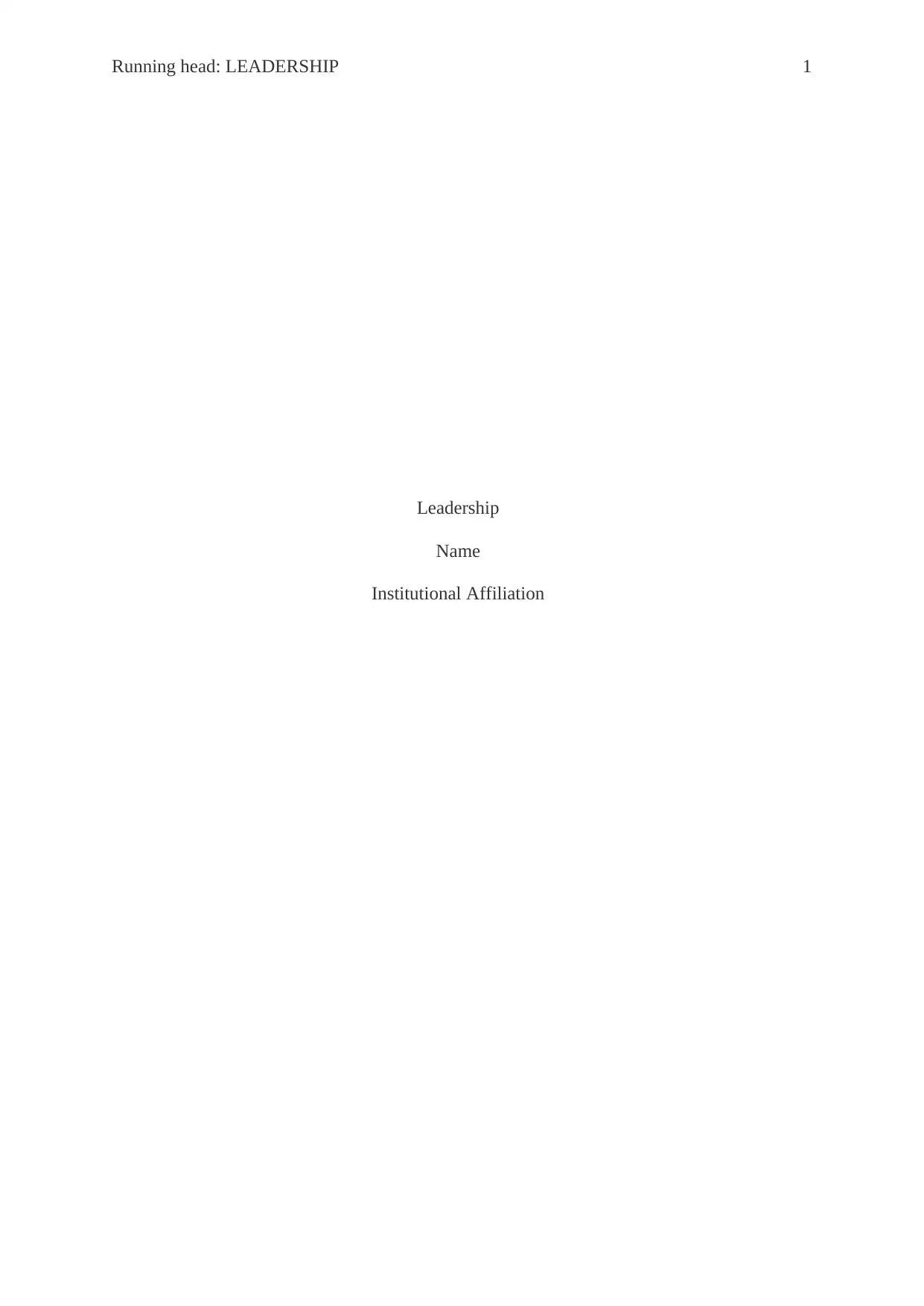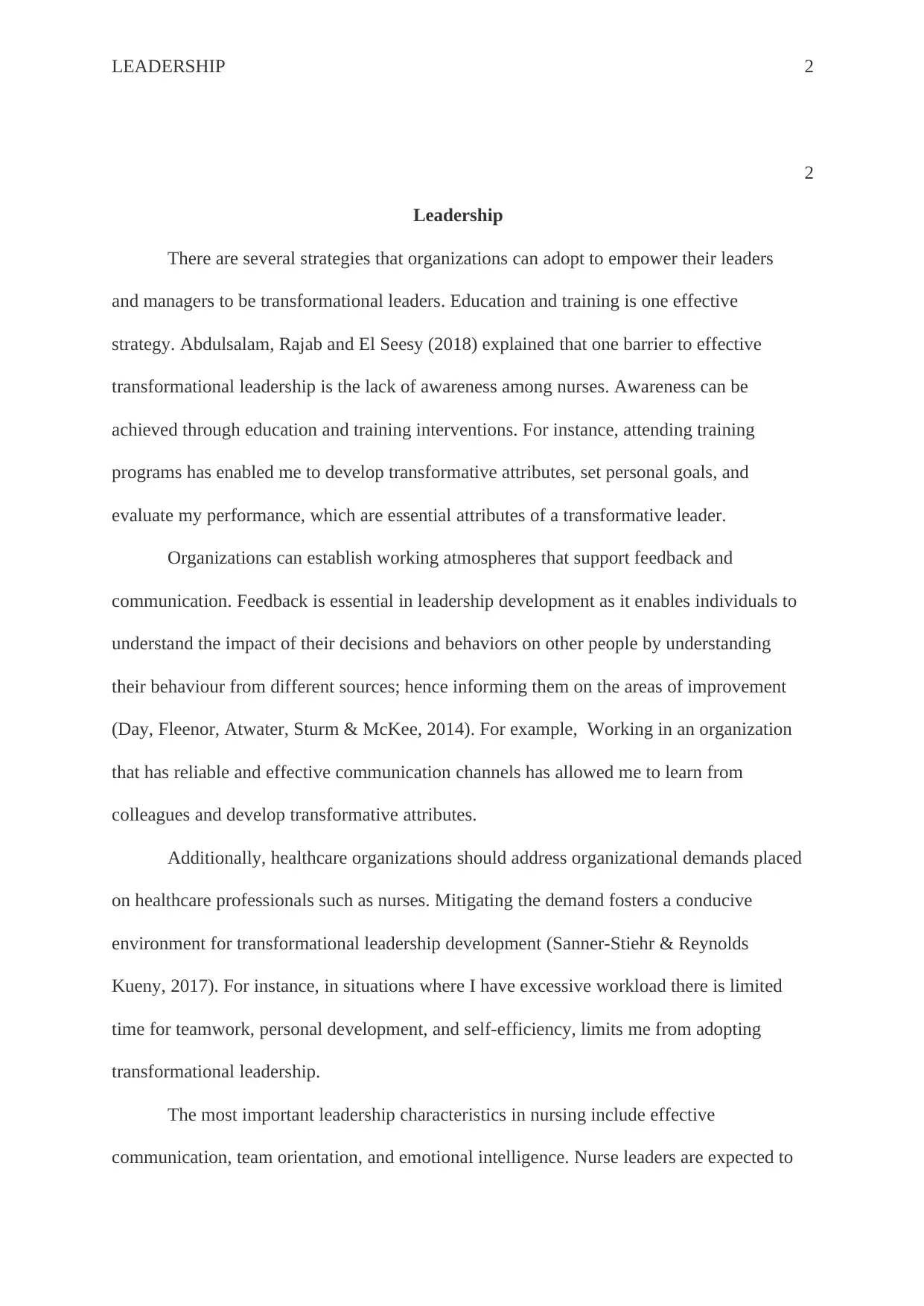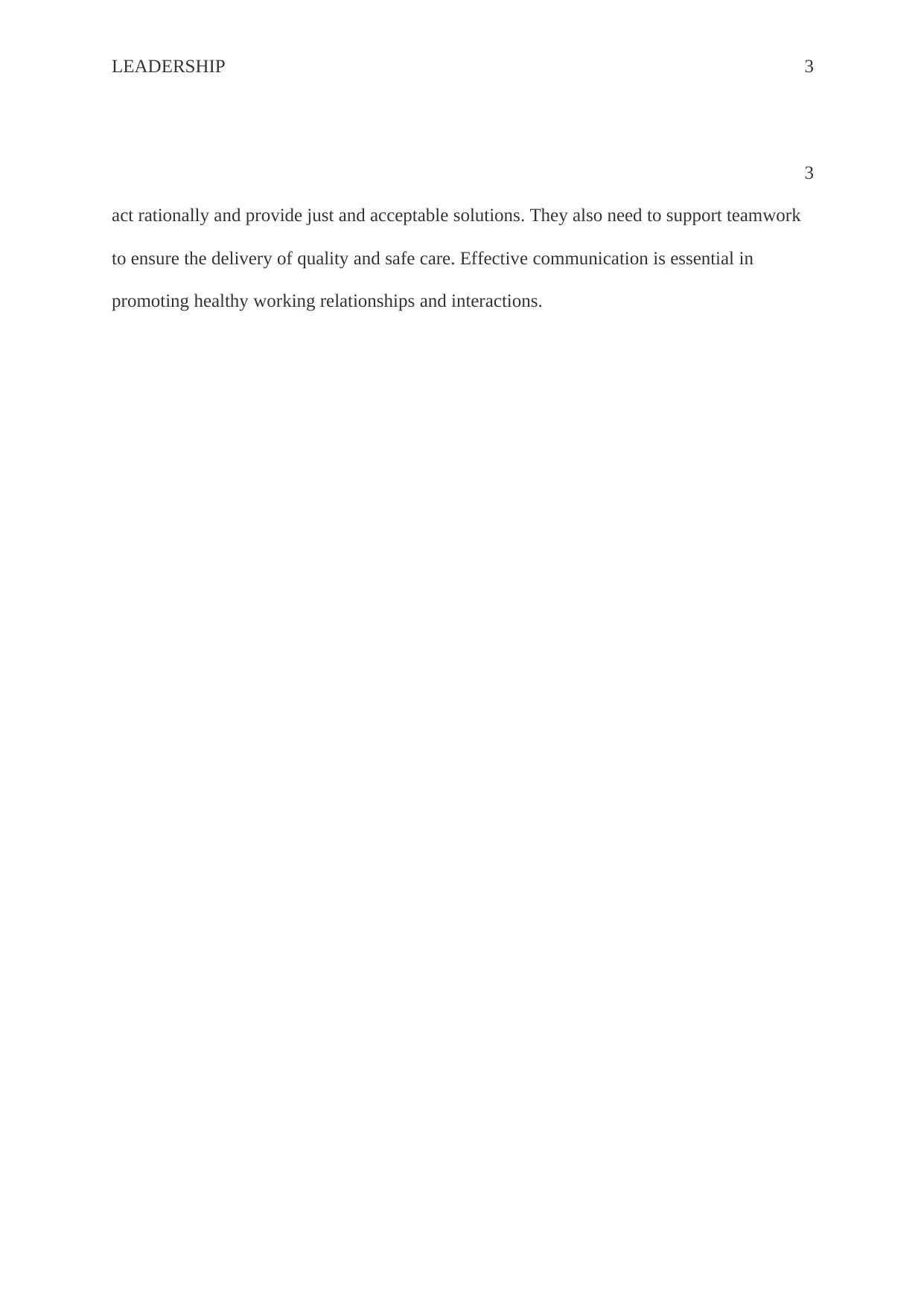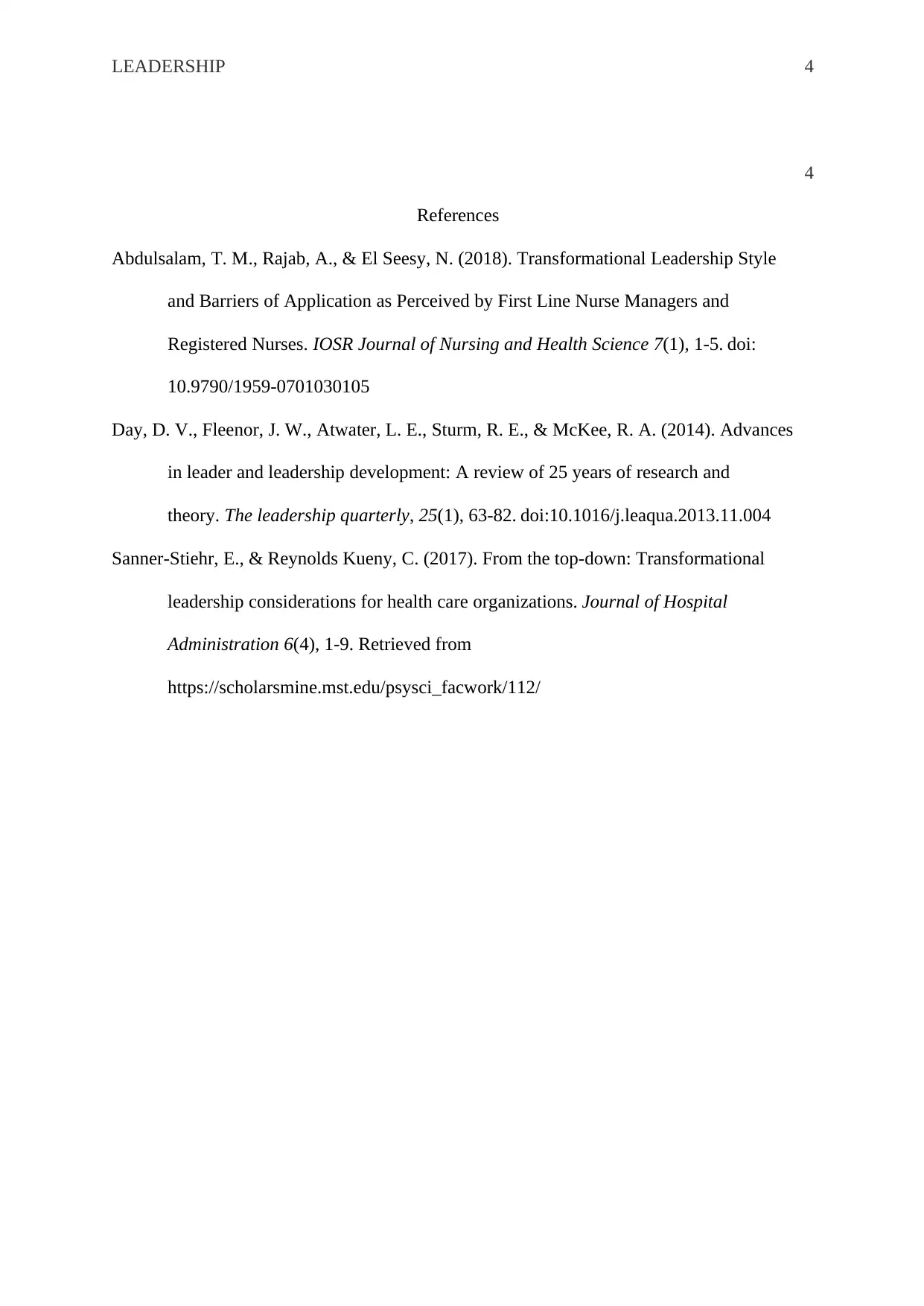Transformational Leadership in Healthcare: Report Analysis
VerifiedAdded on 2022/12/15
|4
|480
|43
Report
AI Summary
This report examines transformational leadership strategies, focusing on their application within healthcare settings. The report emphasizes the importance of education, training, and the development of communication channels to foster a supportive environment for leaders. It also discusses the significance of addressing the demands placed on healthcare professionals, such as nurses, to cultivate effective leadership. The report highlights key leadership characteristics, including effective communication, team orientation, and emotional intelligence, and stresses the need for rational decision-making and the promotion of teamwork to ensure quality and safe patient care. References to relevant research and studies are included to support the arguments presented.
1 out of 4











![[object Object]](/_next/static/media/star-bottom.7253800d.svg)